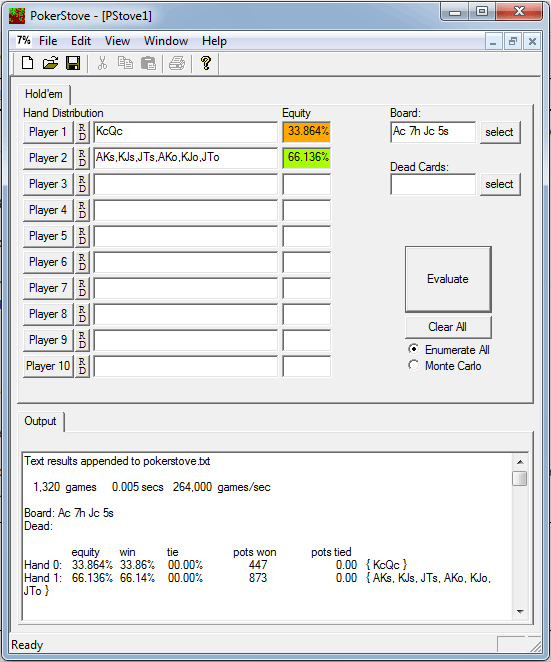
Once you know your outs or what cards to fade you can apply some quick poker math to find out how much equity you have.įor example, let’s say you have AK of spades and the flop is Js6s2h. The first step to determining your equity is finding how many “outs” you have when you are drawing, or how many you need to fade when you have a made hand. There are a few applications of poker equity, but first, let’s figure out how to calculate poker equity. For example, if you are playing a $200 pot and you have an 80% chance to win (80% poker equity), then your hand equity is $160. Another way this is represented is the amount of the pot that is “yours” based on your equity. Poker equity is your percentage likelihood to win the hand. Luckily, you don’t need a PhD to understand calculating poker equity. Regardless of your stance, it has been made clear that calculating poker equity and basing decisions on those quick calculations is an efficient way to make decisions on the felt. The two mindsets often clash, some defending the old-school ways, others pointing to the numbers to explain the game.

However, statisticians and math wizards have used complex algorithms and simulations to find theoretically sound approaches to poker. To many, the game was purely about deception, either by creating it or reading it. Players would play the opponent, not the cards. For decades, poker was a game played based on instincts.


 0 kommentar(er)
0 kommentar(er)
